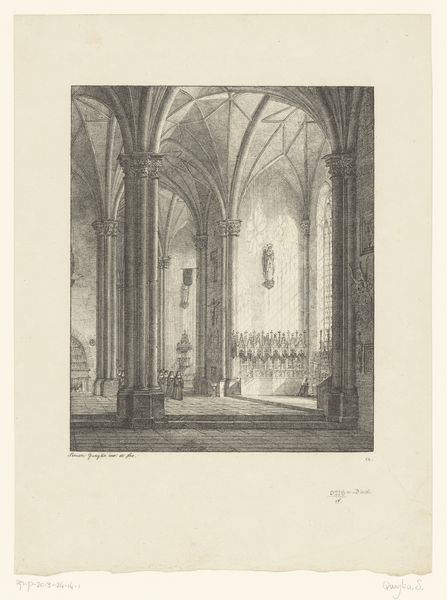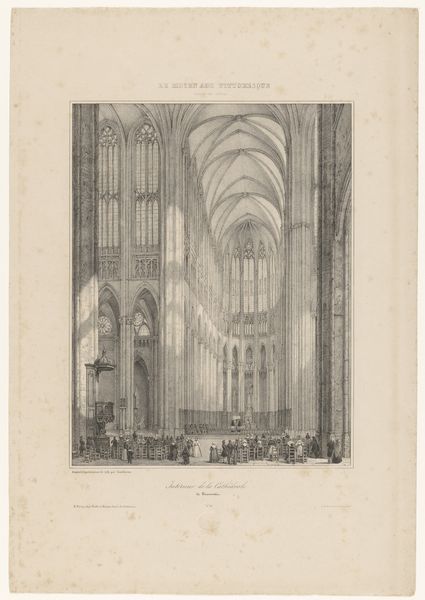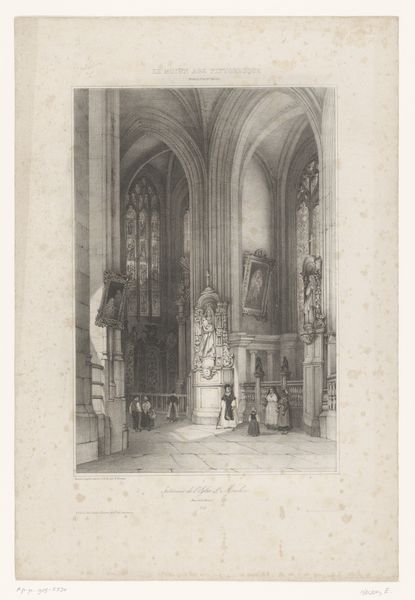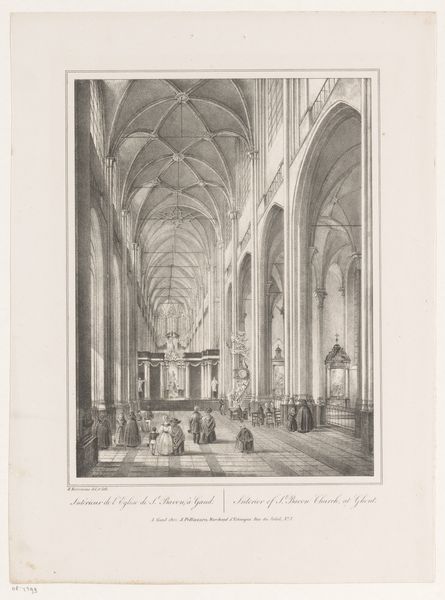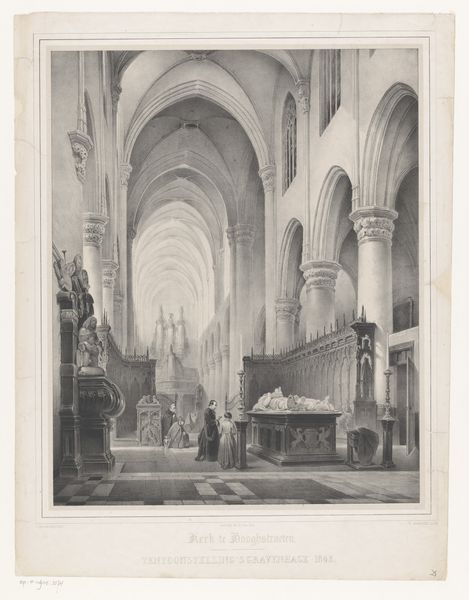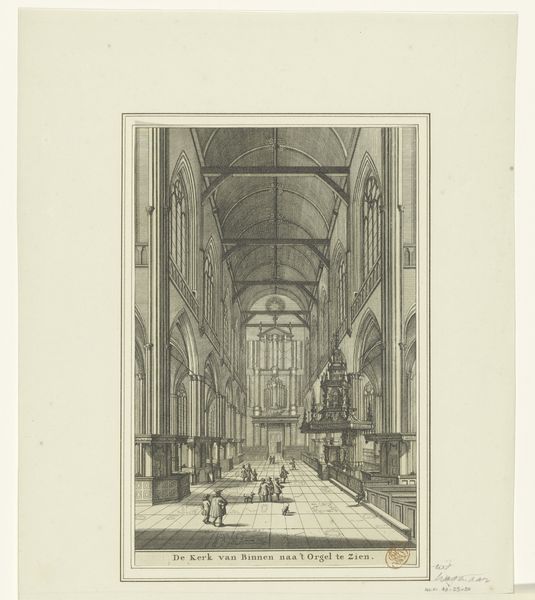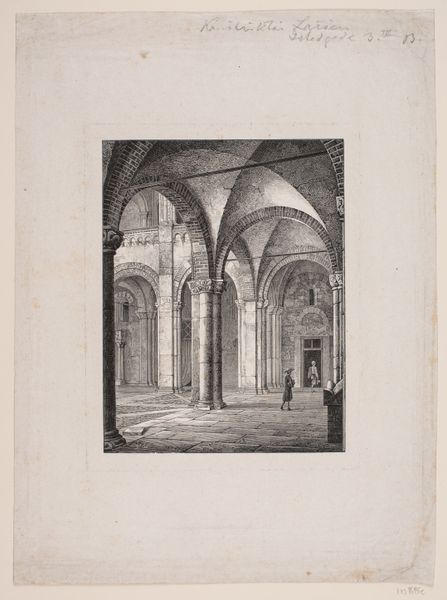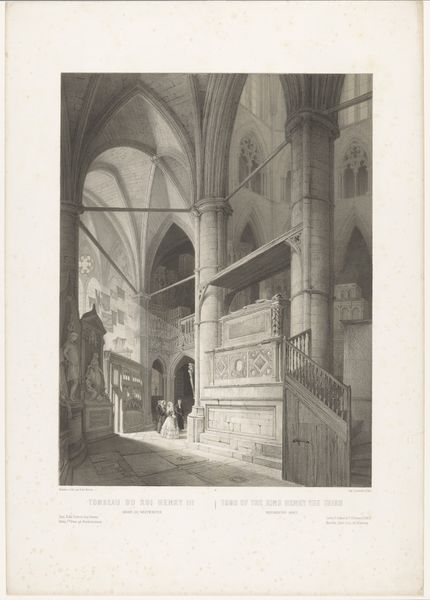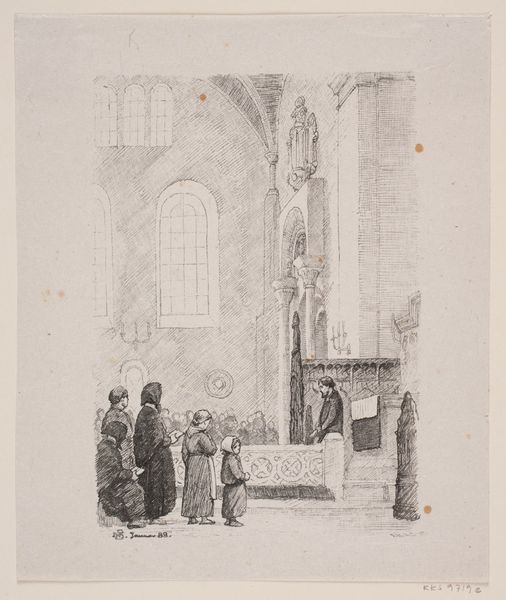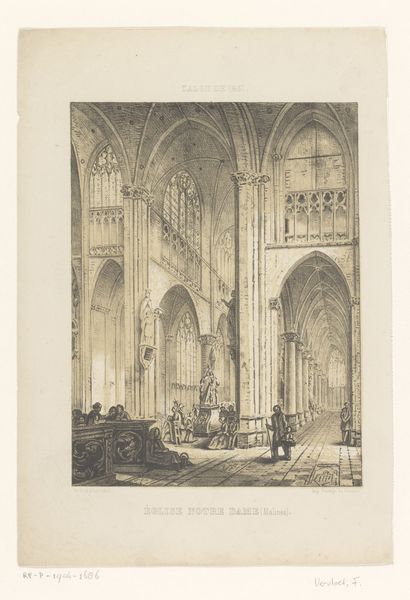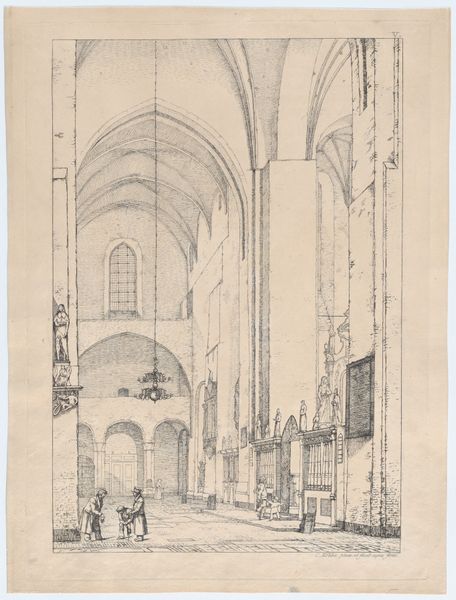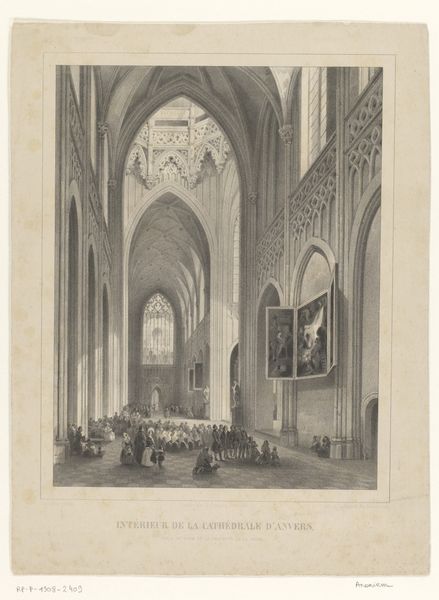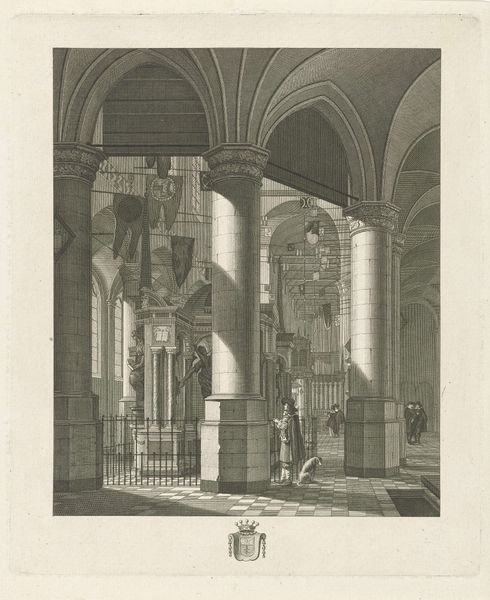
Graftome van Antoni van Leeuwenhoek in de Oude Kerk in Delft 1820 - 1833
0:00
0:00
johannesjelgerhuis
Rijksmuseum
#
aged paper
#
toned paper
#
light pencil work
#
ink paper printed
#
parchment
#
pencil sketch
#
light coloured
#
old engraving style
#
personal sketchbook
#
watercolor
Dimensions: height 315 mm, width 218 mm, height 327 mm, width 265 mm
Copyright: Rijks Museum: Open Domain
Curator: Look at this tender rendering of the Oude Kerk in Delft, created sometime between 1820 and 1833 by Johannes Jelgerhuis. It's called "Graftombe van Antoni van Leeuwenhoek." Editor: My initial thought is silence. An immense, quiet solitude seems to radiate from the space. There are figures included but their smallness in the large nave only exaggerates it. It feels profoundly empty. Curator: Indeed. Jelgerhuis captures the stillness beautifully using delicate pencil strokes, and a very limited palette. What interests me, however, is the quiet homage paid to Antoni van Leeuwenhoek, a scientist, through the monument itself, but also the composition of the image. Editor: An homage, certainly. Leeuwenhoek, often called the "Father of Microbiology," revolutionized how we understand the world. The fact that his monument resides inside a church creates a beautiful paradox—science enshrined within faith, perhaps. This makes me consider questions about the power structures within the art world too: how we elevate and commemorate certain individuals over others, and who gets to decide. Curator: Right! We see a man pointing toward Leeuwenhoek's tomb, almost directing our gaze to what lies beyond, the hidden worlds Leeuwenhoek revealed. His posture even suggests a theatrical reveal. The composition has some flair; a certain lightness of being expressed via architectural rendering. It reminds me, ironically, of how ephemeral scientific breakthroughs sometimes are. Editor: Absolutely. And who is the intended audience here? Is the artist encouraging them to engage critically with legacy, or simply observe a static memorial? Does he imply how much of science is now based on the work of Van Leeuwenhoek? The small figures near the monument feel detached. This distance between subject and observer hints at how society often grapples with science's impact versus scientific history. Curator: Ultimately, I'm charmed by how Jelgerhuis, as an artist, sought to connect with another person's, Van Leeuwenhoek's vision, across different disciplines. He might have considered what Van Leeuwenhoek taught us all. Editor: It underscores how important the past continues to be in shaping our present – and the weight of our historical legacies on today's thinking about everything.
Comments
No comments
Be the first to comment and join the conversation on the ultimate creative platform.
